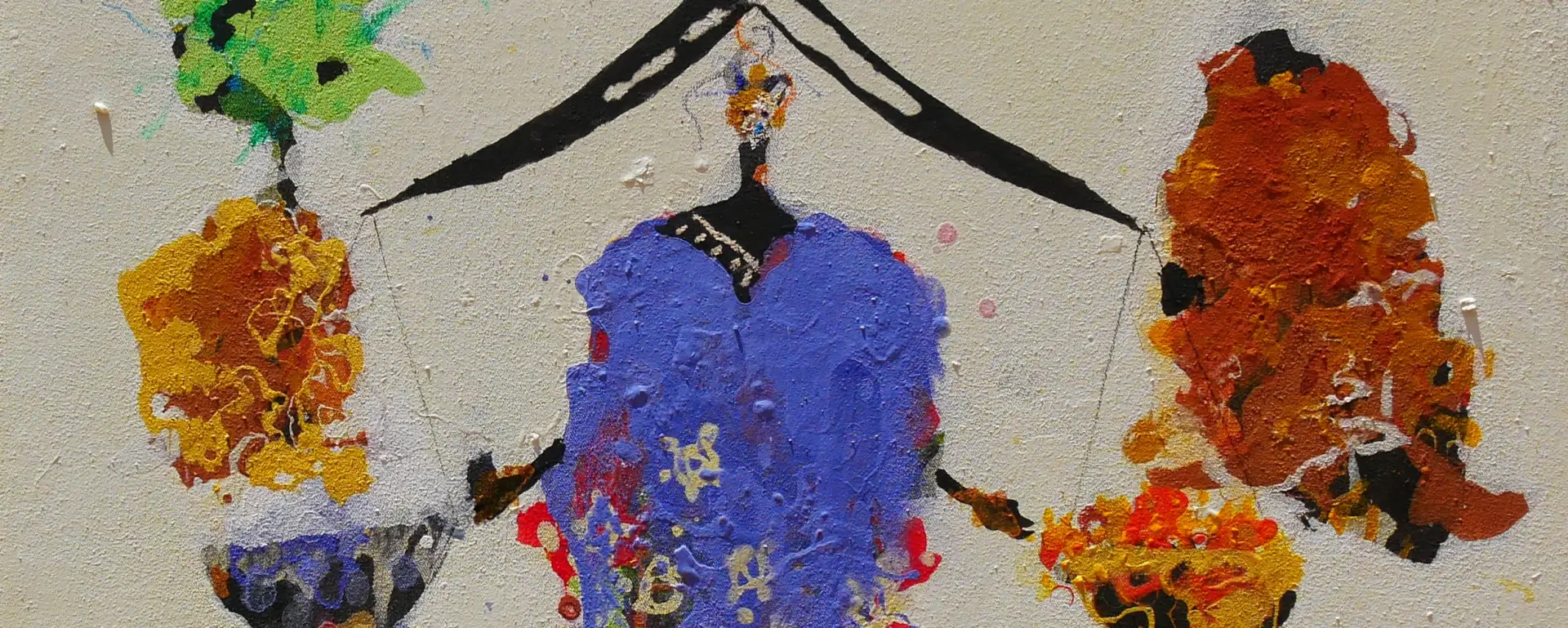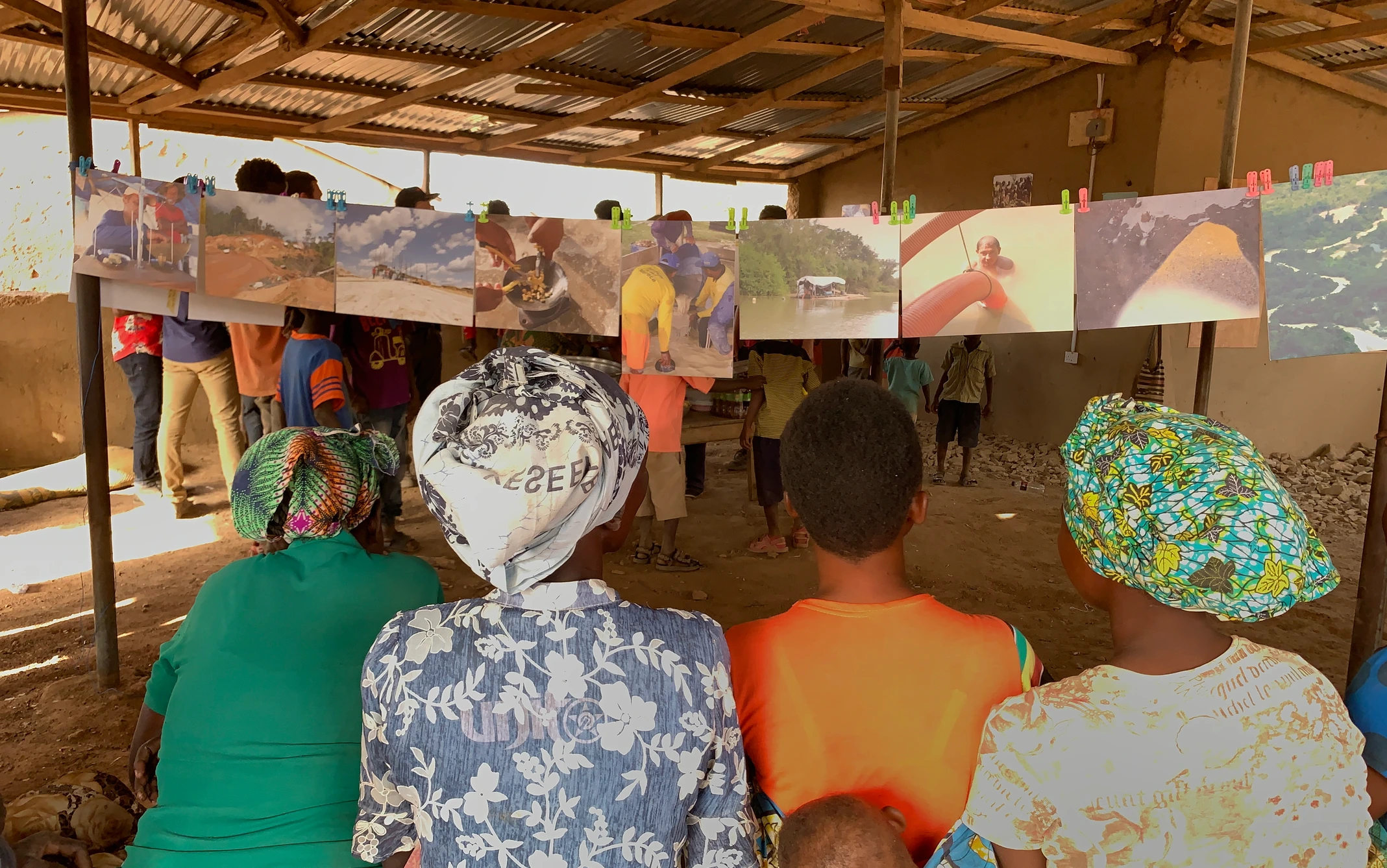
Pretinha looks into the camera and confides that she has no plans to return to her home in Brazil. She has found independence in the gold mines of Suriname and loves the autonomy and camaraderie. Pretinha left Brazil in 2006 in search of a better life in Suriname. After working in salaried jobs to build up some savings, she became a mining entrepreneur. For her, living as a migrant in the gold fields of Suriname is better than living in fear of the violence miners face in her homeland. The mine is not producing gold now, she says, but she is confident that her fortunes will change, and she will find the elusive gold which drew her and 30,000 others to the mines of Suriname.
Pretinha was speaking to Marjo de Theije, an anthropologist at the Vrije Universiteit Amsterdam. Marjo and Pretinha first met in 2006 and their long-term collaboration led to the production of a film in which Pretinha told the story of how she negotiates the precariousness of gold mining, a ‘lifeway’ associated with luck, freedom, mobility, and opportunities to earn money. The film, Gold Surprises Us, made with Júlia Morim, shows how miners like Pretinha live in hope that gold mining will transform their lives.

Photo: Júlia Morim
Millions of people like Pretinha in more than 80 countries in the Global South depend on artisanal and small-scale gold mining (ASGM) for their livelihoods. But ASGM generates negative environmental, social, labour and health impacts. These impacts are reinforced by political dynamics that act against greater sustainability in small-scale mining, and by the poverty and inequalities miners experience in their daily lives, all generating heavy barriers to sustainability.
‘Governments and the public often treat these miners as criminals who are responsible for environmental destruction,’ said Marjo.
“If ASGM is to ever attain any level of sustainability, we must learn how gold miners, like Pretinha, engage with, understand, and transform their relationships to the natural, social, political and economic worlds.”
A project entitled Exploring Transformations to Sustainability in Artisanal and Small-scale Gold Mining: Trans-regional and Multi-Actor Perspectives, or Gold Matters, examined whether and how societal transformations towards sustainable mining futures are possible in artisanal and small-scale gold mining. As part of the Transformations to Sustainability (T2S) programme of the Belmont Forum, the NORFACE network and the International Science Council, the project brought together a transdisciplinary team to conduct research in Brazil, Suriname, Ghana, Burkina Faso, Guinea and Uganda.
The project asked how we can better understand what futures miners anticipate and wish for. It gave recognition to miners’ voices, agency and knowledge with the hope of developing more democratic ways to address sustainability challenges. The project team used artistic collaboration to enable those involved to communicate about their lived experience of mining and to help external observers gain more nuanced insight into their lives.
‘We set out to create innovative ways of visualizing the mining worlds that are portrayed in negative, stereotyped and homogenizing ways,’ said Eleanor Fisher, the project leader and an anthropologist at the Nordic Africa Institute based in Sweden. ‘Since miners work underground in pits too dangerous to access or because they operate in remote places or in the shadows of the law, much of their work is obscure. Visualization by means of photography, video and art helps bring to light the diversity of mining terrains and the close connections between miners and these terrains.’
A visual approach helps open up possibilities for miners to present themselves with dignity and to build opportunities to bring mining stakeholders together to address sustainability issues.

Photo: Nii Obodai
The Gold Matters team built their work around the concept of co-labouring, namely working together with miners and other stakeholders to understand and portray gold-mining worlds.
‘We sought to co-labour understandings of the futures inspired by gold,’ said Eleanor. ‘Gold Matters did not intend to mediate the translation of local mining knowledge and practices into a universal language of sustainability, nor to dictate how change should occur in gold mining. We wanted to learn about how miners envisage sustainability challenges and their futures inside and outside of mining. With artists, we collaborated with miners to represent their work, lives and futures for others to better understand.’
The Gold Matters team included two artists, Nii Obodai, a photographer and director of NUKU studio in Ghana, and Christophe Sawadogo, a painter in Burkina Faso. Others joined the team for different pieces of work: Gideon Vink, a filmmaker in Burkina Faso; Júlia Morim, a filmmaker in Brazil; Mabel Seena, a photography student in Ghana; and Achom Agatha, a painter in Uganda.

Photo: Nii Obodai
The visual material included photographs, paintings, public sculpture, and films. These artworks were produced in situ, where gold mining is taking place, and production incorporated a participatory dimension.
To highlight the potential of co-labouring and gain further insights, Gold Matters held a workshop in Kejetia, in northern Ghana. The workshop focused on transdisciplinary collaborations. It involved residents of the Kejetia mining community and from other parts of Ghana (including male gold miners, women involved in processing ore and schoolchildren). Team member and artist Christophe Sawadogo worked together with women in Kejetia to create a public sculpture. A wooden scaffold was used to represent a mine shaft was covered in bags that had served for carrying mining ore, together with paint which had been deliberately mixed with local earth.
The artwork became a site for commemorating gold miners who had died in two tragic underground mining accidents in Kejetia. ‘It was important to put energy and motivation together,’ said Christophe. ‘Art is part of social life. It expresses the beauty and the pain of people, and it addresses societal concerns in new ways.’
A key objective of the Gold Matters project was that visual materials co-created with members of mining communities should circulate between these communities. The team envisaged organizing ‘pop-up’ exhibitions, which would travel from West Africa, to Uganda, and the Amazon, and adding new works while on the road. COVID-19 stymied those plans, so the team developed a virtual exhibition. The Exhibition takes the audience on a journey moving to visual results from the Amazon, Uganda and West Africa.
‘With Gold Matters we developed a platform to provide more nuanced perspectives on the lives of gold miners, like Pretinha, whose lived experience confronts many inequalities and injustices, while also opening up opportunities for conversations on sustainability,’ said Eleanor.
For Marjo, Eleanor and the Gold Matter’s team, co-labouring together with gold miners underlined how these miners are involved in basic struggles for material rights and needs. For them, achieving security in the here and now is their priority. ‘We learned that focusing on small-scale gold mining as a discrete issue is insufficient if we are to make progress towards sustainability transformations,’ said Eleanor. ‘Instead, we must address sustainability issues in gold mining in light of broader societal transformations that provide employment, opportunities and social justice for informal workers worldwide.’
Header artwork by Christophe Sawadogo